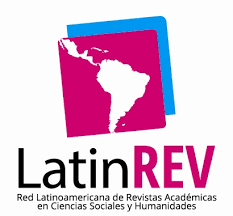The impact of deforestation and the need for environmental analysis
Keywords:
deforestation, reforestation, felling of trees, forests, oxygen, environmental IssuesAbstract
Deforestation occurs because of massive felling of trees or other different use of the land, it is currently one of the ten main environmental problems, caused mainly by man such as agriculture, livestock, and urbanization and by natural phenomena tsunamis, forest fires and parasites. Thus, the conservation of green areas becomes so necessary and favorable for the conservation of biodiversity. Among the main consequences of deforestation are climate change, desertification, air pollution, soil degradation, food deficit, loss of habitat. It is transcendental that public and private institutions work with the different social actors in an
articulated manner and that all people become aware of their role in caring for the environment. In order to reduce the damage caused by deforestation, within this context, conceptual aspects, causes and main actions are analyzed, such as reforestation for the maintenance of forests, sustainable practices of agriculture and livestock, as well as awareness for care and conservation. of trees and forests.
References
Benitez, A. (15 de Junio de 2020). Paraguay es el segundo país más deforestador de Sudamérica. La Nación. https://www.lanacion.com.py/pais/2020/06/15/paraguay-es-el-segundo-pais-mas-deforestador-de-sudamerica/
Dora-Alicia Garc ía-Garc ía, G.-E. G.-M.-R.-T. -R.-J.-F. (2019). Deforestación y degradación de ecosistemas boreales, causas y efectos. Revista Latinoaméricana de Recursos Naturales, 49-58.
Erquicia, A. (06 de Agosto de 2019). Bolsonaro desangra al Amazonas: la deforestación avanza sin cesar. Atalayar entre dos orillas.
Fernando Bonfati; Matías Sánchez (2019). Dinámica de la deforestación en el noroeste del chaco entre 1995 y 2018. Dialnet Plus, 29-49.
FAO . (2022). Organización de las Naciones Unidas para la Alimentación y la Agricultura 2022. https://www.fao.org/sustainable-forest-management/toolbox/modules-alternative/reducing-deforestation/basic-knowledge/es/
Garc ía Marín, María Eulalia. (2016). La deforestación: una práctica que agota nuestra biodiversidad. Producción + Limpia, 11 (2), 161-168. https://doi.org/10.22507/pml.v11n2a13
Garrido, M. D. (2018). Programa de Educación Ambiental para Contrarrestar los Factores de la Deforestación. Revista Scientific, 115-135.
Godoy, K . (04 de Noviembre de 2018). Chaco: Paraguay pierde 334 ha. de área verde por día. Última Hora. https://www.ultimahora.com/chaco-paraguay-pierde-334-ha-area-verde-dia-segun-informe-n2777347.html
Última Hora (25 de Agosto de 2020). Paraguay, entre los países que más deforestan para producir carne. Última Hora. https://www.ultimahora.com/paraguay-los-paises-que-mas-deforestan-producir-carne-n2901703.html
Independiente, E. (20 de Enero de 2022). Paraguay es el sexto país que más deforesta en el mundo. El independiente.
Chamba J., Bermeo L. y Sarango Y. (2020). Producción ganadera: la deforestación y degradación del suelo, una estrategia para el desarrollo sostenible. Revista Científica Agroecosistemas, 77-82.
Luque-Ramos, L. (2021). Análisis de la deforestación de la Amazona Peruana: Madre de Dios. Revista Innova Educación, 3(3), 112-198.
Plitt, L. (8 de Noviembre de 2010). Los escarabajos están acabando con bosques en América del Norte. BBC, Mundo ambiente. https://www.bbc.com/mundo/noticias/2010/11/101103_escarabajo_bosques_eeuu_lp
Pulmón, A. t. (21 de junio de 2022). Protegiendo el hogar de nuestro gran felino en el Bosque Atlántico. https://atodopulmon.org/paraguay-mas-jaguarete-protegiendo-el-hogar-de-nuestro-gran-felino-en-el-bosque-atlantico/
Sandra Ríos, R. L. (2018). Deforestación en el Noroeste de la Amazonía Peruana. En Deforestación En Tiempos De Cambio Climático (págs. 93-104). Lima: Alberto Chirif. Varg as, V., Reyes, A., & Cristóbal, C. (2018). Obtenido de La deforestación como consecuencia del incremento de áreas de cultivo: actividad provocadora de modelos.
Downloads
Published
How to Cite
Issue
Section
License
Copyright (c) 2023 Universidad Columbia del Paraguay

This work is licensed under a Creative Commons Attribution-NonCommercial-ShareAlike 4.0 International License.
The Editorial Committee of the Journal reserves the right to introduce formal modifications necessary to adapt the text to the publication standards, for this reason, the digital version of the article presented must be modifiable.
Once published, the printing and reproduction rights belong to the Publisher. It is optional for the Editor to allow the reproduction of the article. In this way, it works with the Creative Commons 4.0 license, which deals with non-commercial recognition, share alike.






